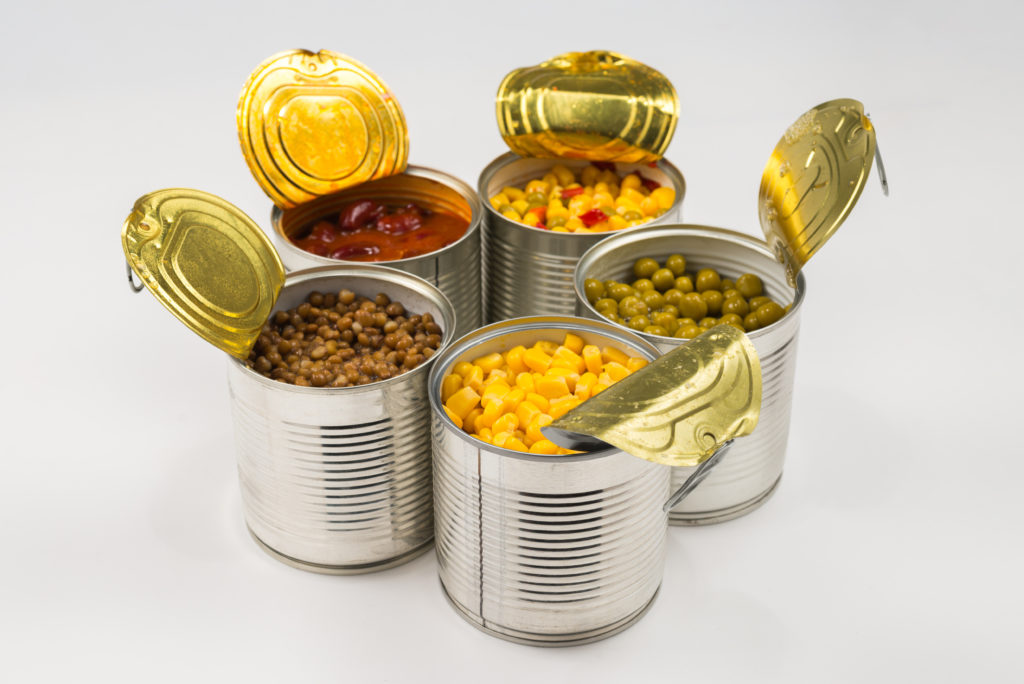What is appertization or canning of perishable foods?

What is appertization or canning of perishable foods?
Appertization or canning is the process of sterilizing perishable foods in hermetically sealed containers. It was perfected in the 19th century by a French confectioner. This method ensures long-lasting preservation of products. It can be used to preserve vegetables, meat and ready-made meals. But what are the different stages in this process, which combines packaging and heat processing?
Canning, a heat-based preservation process
Heat processing of perishable foods is the most common process for the long-term preservation of food products. Canning is defined as a method of preserving food by thermal sterilization in hermetically sealed containers. These can be glass jars, metal cans, trays, Doypack bags, etc.
Food packaging and heat processing: a blend of two techniques
The canning process combines two techniques. Firstly, food products are packaged in metal cans or glass jars. Secondly, they undergo a high-temperature heat treatment known as sterilization. By subjecting the food in its packaging to hot water or steam at a temperature over 100°C, any micro-organisms, spores or toxins that might make it unfit for consumption are eliminated.
Once bacteria have been destroyed or inactivated by boiling water or hot steam, food products can be stored at room temperature for up to five years. A date of minimum durability (DMD) always accompanies a product that has been canned. Exceeding this date does not prevent the product from being marketed or consumed. It simply indicates how long the food will retain its full taste and nutritional potential.
What’s the difference with pasteurization, another heat processing?
Heat processing techniques vary according to the characteristics of the food product to be canned. If the food is acid, such as pickled fruit or vegetables, pasteurization is used. Unlike canning, the food is subjected to a moderate heat treatment. The temperature of the water or steam oscillates between 85°C and 100°C for a set period of time.
The food must then cool rapidly. The pasteurization method enables you to remove all micro-organisms in the same way as canning. It does not, however, remove their spores. This is why non-acidic pasteurized foods should be stored at low temperatures. Acid foods (pH < 4.5) are stabilized by pasteurization and can be stored at room temperature.
Nicolas Appert, the French inventor of the canning technique
The term appertization derives from the surname of its inventor, Nicolas Appert (1749-1842). At the end of the 18th century, this French confectioner became interested in food, and in particular in the preservation of food by heat. In 1810, he published “L’Art de conserver”. In it, Appert describes his technique. It won him first prize in a government competition.
Appertization consisted in filling a glass jar with the product to be preserved and sealing it hermetically. The jar was then immersed in extremely hot water. Temperature and duration varied according to the food. Finally, the jar had to cool quickly. Nicolas Appert’s invention was taken up by the British: Peter Durand, Bryan Donkin and John Hall. The British adapted it to metal cans, placing the containers in an autoclave to sterilize them.
Canning, sterilization, cooling: the different stages of appertization
Today, many different types of food can be preserved by canning. This preservation process applies to vegetables, fruit, fish, meat, bottled milk and ready-to-eat recipes. There are several stages in the production of products using the canning process.
Food canning and juicing
Appertization or canning must be carried out as soon as possible after the food has been harvested. The freshness of the products depends on it. After blanching or pre-cooking, the food is canned. A covering liquid (juice or sauce) is added to the can. This juice facilitates heat transfer during sterilization. Next comes the crimping process. The can is closed, removing as much air as possible. For glass jars, this is called capping.
Water or steam sterilization in an autoclave
An autoclave is a kind of pressure cooker capable of withstanding the high pressure generated by the rising temperature of the water. The product is heated by boiling water or hot steam at a temperature over 100°C. The sterilization programs specific to the food, can and autoclave used must be followed throughout the process. There are different types of autoclave for food packaging.
- Air-steam autoclave: uses a mixture of air and steam to preserve the packaging.
- Autoclave with water spay: water is sprayed under pressure and can be recycled, saving water consumption.
- Bi-process autoclave: combining the two previous methods, this technology is suitable for high-capacity autoclaves.
- Immersion autoclave: the traditional autoclave operating by immersion of containers.
Pressure cooling to stop heat processing
The final step in the canning process is to cool the cans rapidly, directly in the pressurized autoclave. Low-temperature water is injected, creating a thermal shock that stops the heat treatment. Once the canning process is complete, the cans undergo several quality checks before being stored or distributed.
Canning is therefore the key to the shelf-life qualities of cans and other long-life food containers. Performed in an autoclave, it heats and sterilizes the product directly through its packaging, using hot water or steam. Steritech specializes in autoclaves and continuous systems. We can guide you in your choice of sterilization solution.